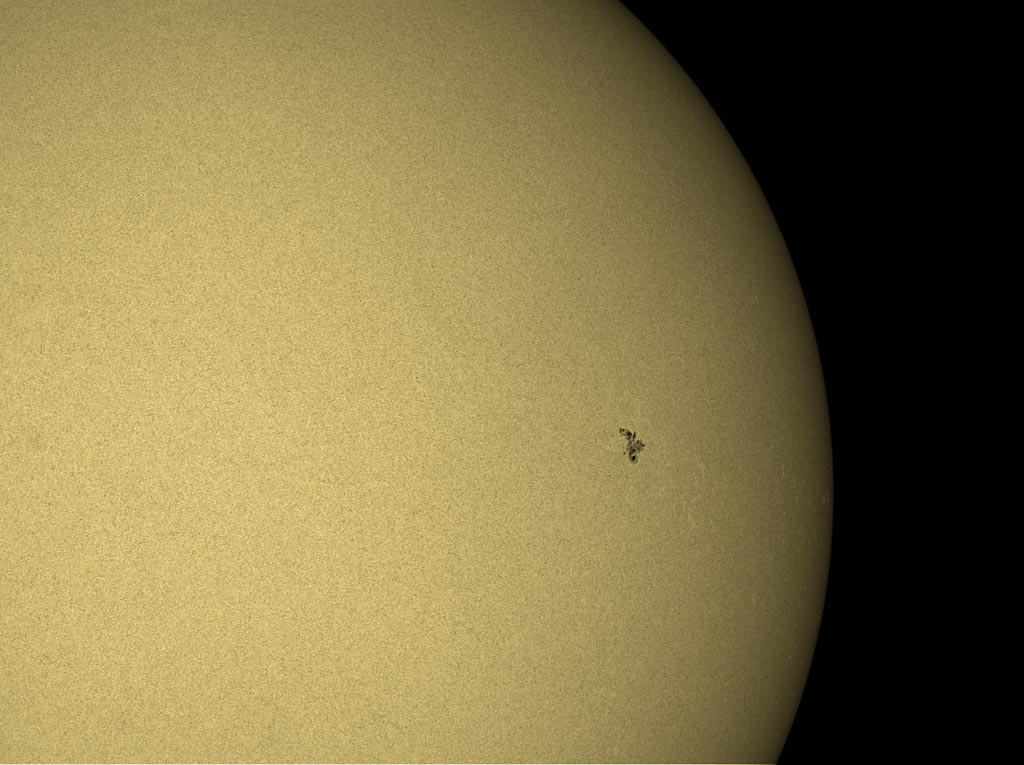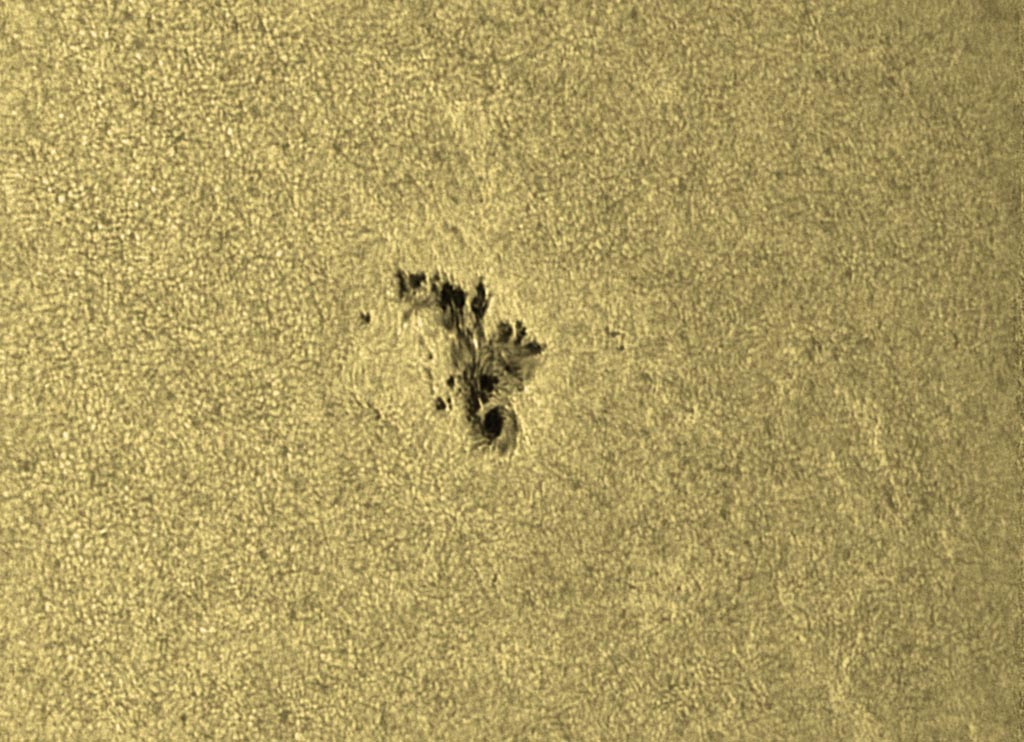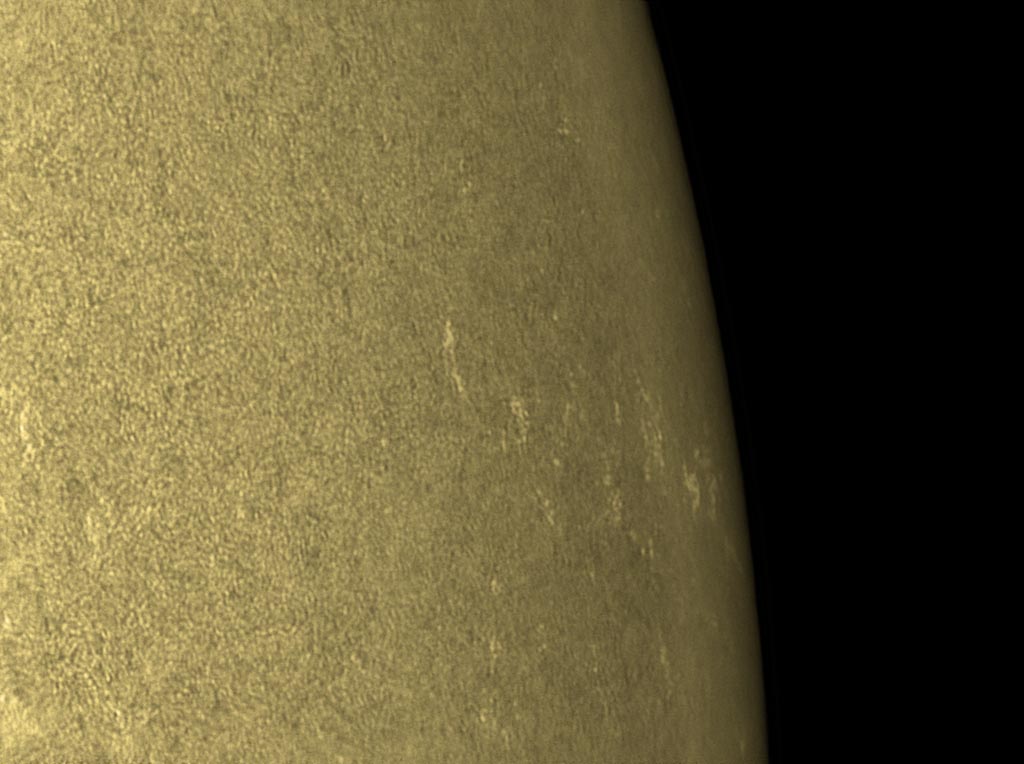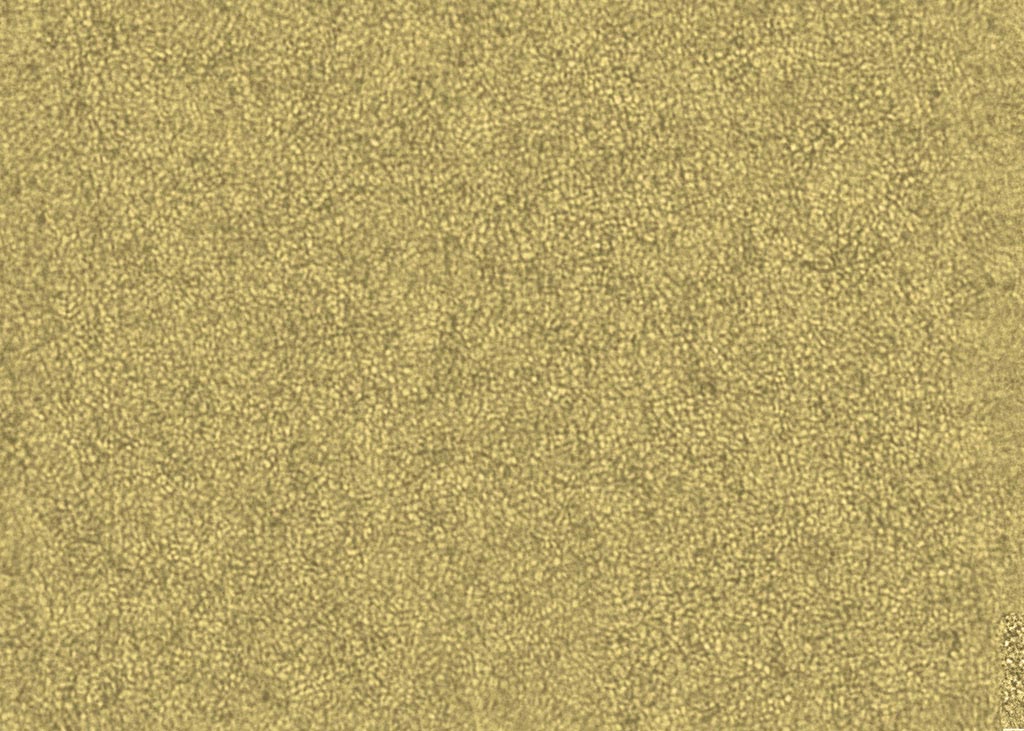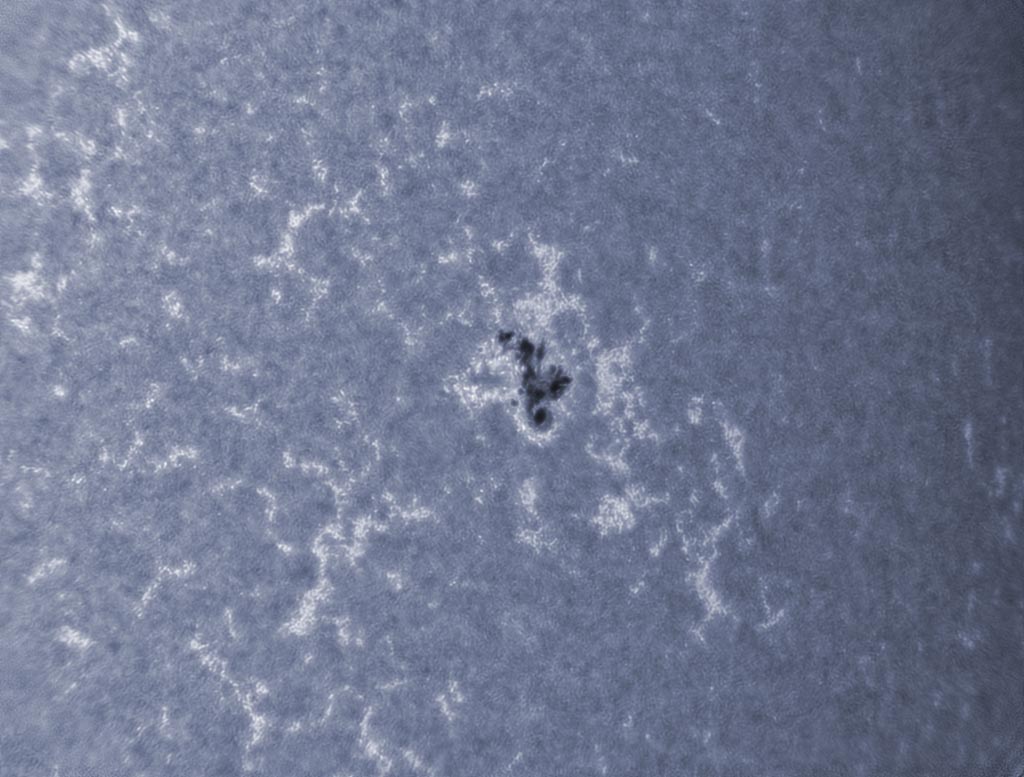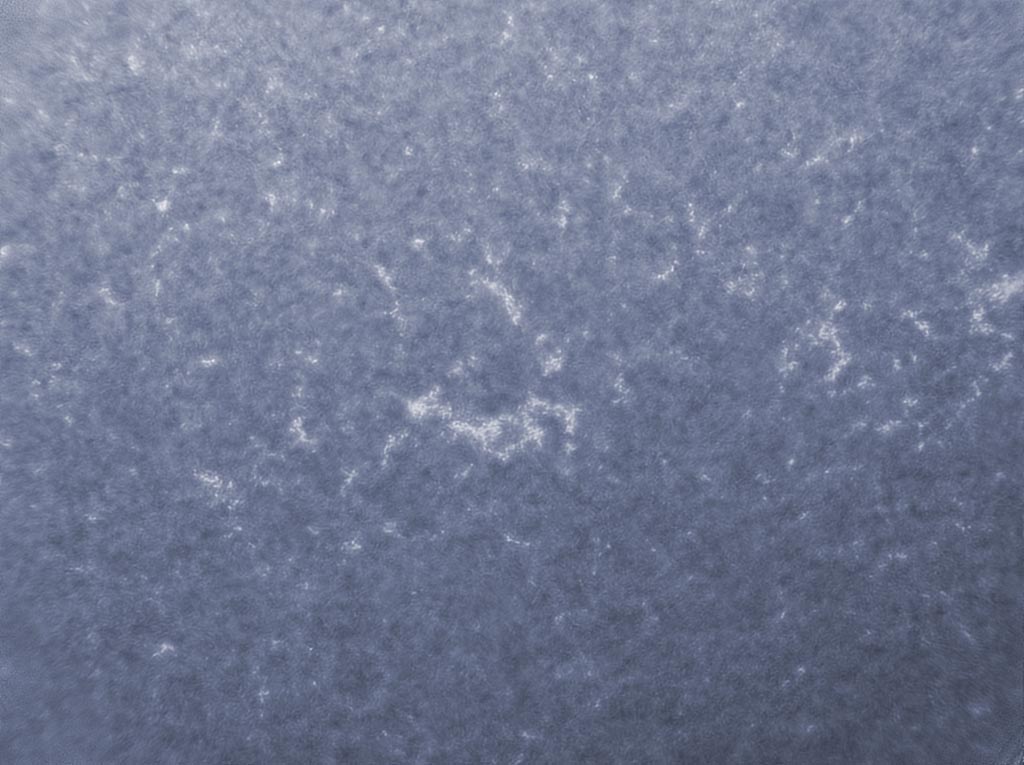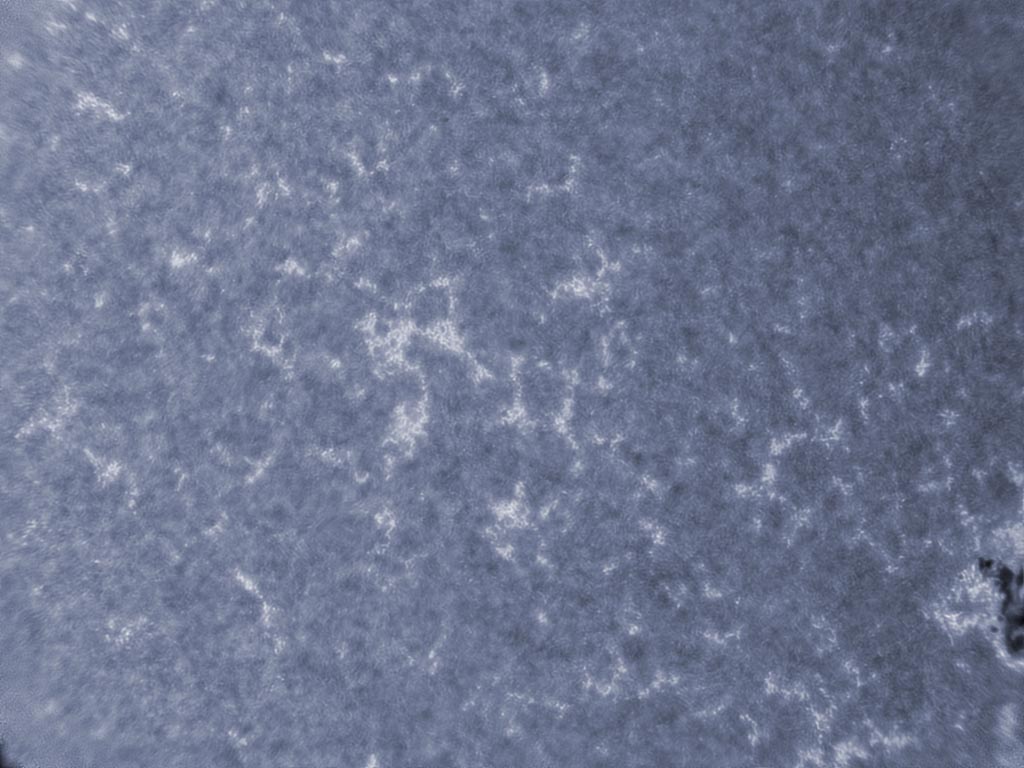Sun in CaK / White Light With Explore Scientific AR152 Refractor + Lunt CaK filter or Baader Wedge Uploaded 6/9/16 Daily Report For Thursday June 9, 2016
Images below are 800 wide and non clickable
After a few days of a totally blank white light Sun, a small group has appeared on the limb that is rotating off the disk. Seeing was 2/5 and the granulation was visible about 60% of the time, so I was able to use the 5x Powermate for the white light images and show some decent detail. I followed this with a run with the calcium filter, which surprisingly had fair detail as well. Finally, a shot with the 3x Barlow of the planet Mercury, now a good 35 degrees from the Sun and in a blue sky. Seeing by then was a lot worse, but you can see its half phase easily with the six inch.
WHITE LIGHT:
Lets start with a prime focus shot with the six inch stopped to 4 inches. The new tiny spot has considerable detail.
A close up with the 5x Powermate shows an extensive penumbra and many small black umbras.
Some nice white faculae on the limb:
And when there is nothing better to shoot, the center of the Sun shows off its granulation fairly well today, with some dim gray patches - known as "Veiled Sunspots" here and there.
The calcium K shots are far more interesting from an activity point of view. While the calcium granulation is quite small, the plage (UV Faculae) is quite extensive seen here as white areas in circular arcs that define the "Super Granulation".
Another nice area on the disk, no sunspots but nice plage.
Near the center of the Sun:
Mercury shows a small crescent phase.
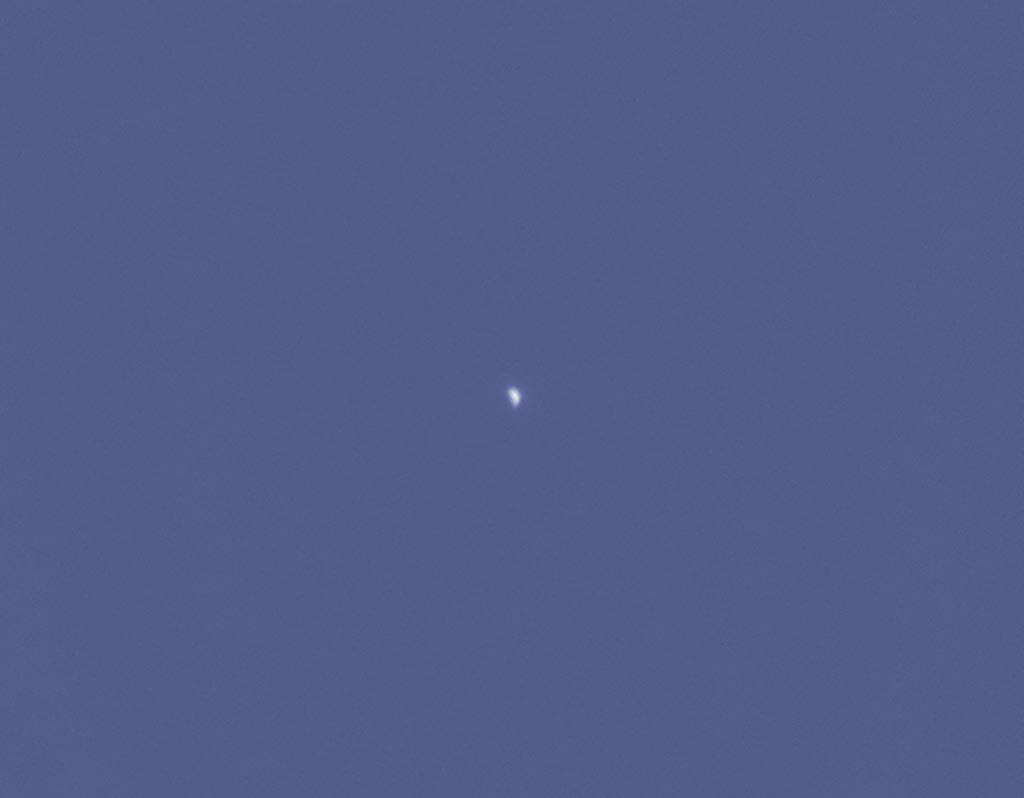
Instruments: Explore Scientific AR152 Platform: Astrophysics 1200 Camera: DMK 51 (1600 x 1200) Location: Payson, Arizona Elevation: 5150 ft. Sky: Seeing 1.5/5, Transparency 7/10 Outside Temperature: 65F Processing: Autostakkert 2, Registax 6, Photoshop CS2 Solar Home Page HOME SCHMIDT GALAXIES EMISSION NEBS REFLECTION NEBS COMETS GLOBULARS OPEN CLUST PLANETARIES LINKS
